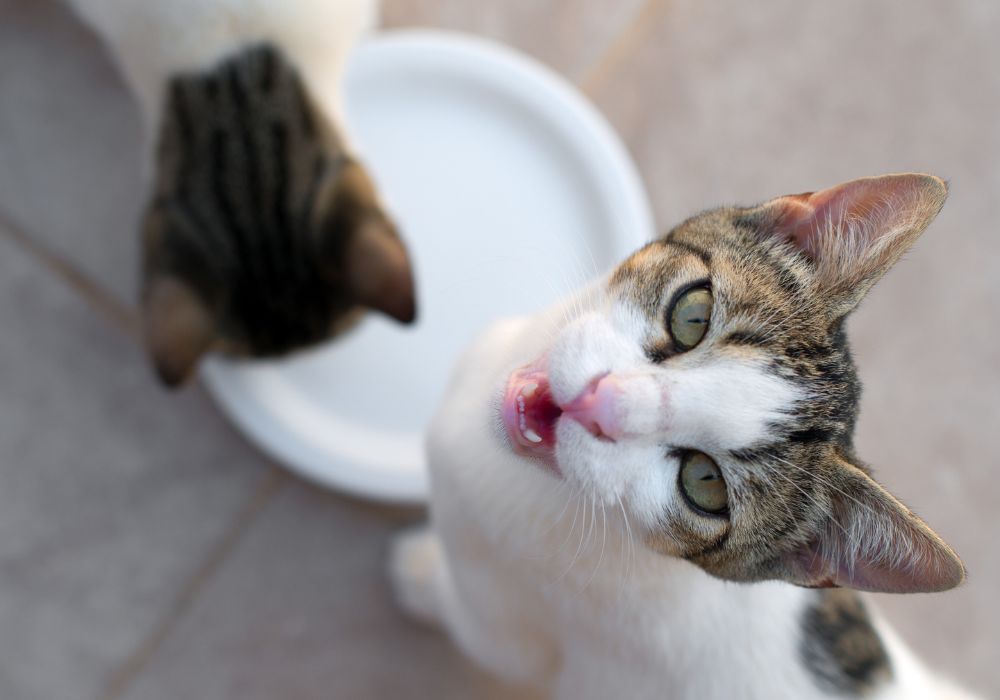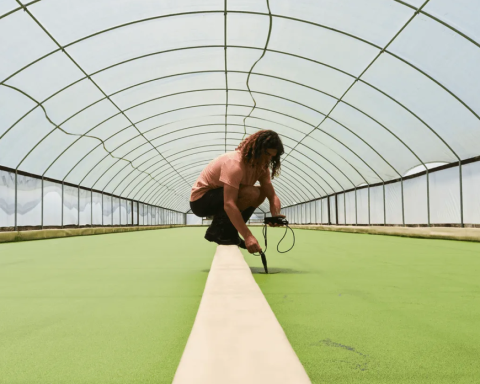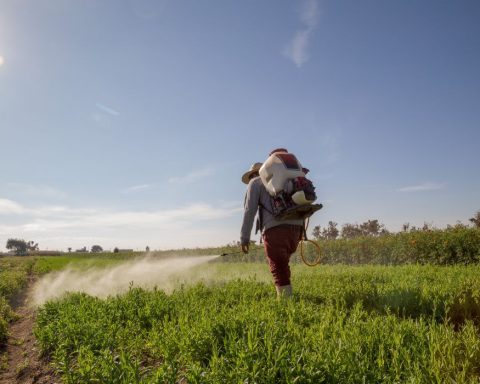Cult Food Science is taking on the food system, with sustainability and ethics in mind and cellular agriculture as its guiding light. The first publicly traded company of its kind in North America, the investment company boasts a portfolio of early-stage cultured protein products, including GOOD Meat, the first lab-grown chicken to receive regulatory approval in Singapore and the United States.
But Cult is not only focused on food for people; if all goes according to plan, the Canadian company will take the first cell-based cat treat to market. “Fish without fishing,” reads the label of Marina Cat, slated for release next year.
While it may seem unconventional to focus on pet food as a means to improve human food systems, Cult believes the pet food industry is a crucial cog in the broader animal agricultural wheel. “Dogs and humans don’t have separate food systems,” explains Joshua Errett, the company’s vice-president of product development.
In fact, today’s mainstream pet food is produced primarily with animal by-products, the leftovers deemed unsuitable for human consumption, which Errett notes is about 30% of what can’t be used from an animal.
The industry’s ability to sell off the unusable product to pet food companies is an economic driver that would otherwise become a major cost. “If we took out that revenue stream, the leg of that table would sort of collapse,” Errett says, “because factory farms operate on razor-thin margins as it is, and if they can’t sell all the offcuts or B-meat into pet food, it becomes biohazardous waste, and they would have to pay to have it removed.”
Errett believes that the best way to reduce society’s reliance on industrial agriculture and meat is through pet food.
So he developed a freeze-dried meat-free dog treat called Noochies! – Cult’s first product available in North America. The treats are made with E formulation of cultured nutritional yeast called Bmmune, “specifically designed to be high in protein to meet our pets’ daily protein requirements,” according to a company statement, and “provide the animals with meaningful amounts of fiber, immune-boosting B vitamins and gut-pleasing fermented ingredients,” no dead animals required.
Divesting from industrial animal farming in the pet food sector would deliver significant environmental benefits. A 2017 study published by University of California Los Angeles professor Gregory Okin, entitled Environmental Impacts of Food Consumption by Dogs and Cats, found that meat consumed by cats and dogs in the U.S. alone accounts for roughly 64 million tons of carbon dioxide equivalent per year – equal to driving 13 million cars for a year. The study calculated that pets are responsible for 25% to 30% of the environmental impact of meat consumption in the U.S. “If Americans’ 163 million Fidos and Felixes comprised a separate country, their fluffy nation would rank fifth in global meat consumption,” reads a UCLA press release, “behind only Russia, Brazil, the United States and China.”
Environmental and ethical concerns regarding pet food also extend to oceans. A 2008 study published in the Journal of Agricultural and Environmental Ethics found, for example, that cats are a bigger threat to fish stocks than humans in Australia, where the research was conducted, consuming on average 13.7 kilograms of fish and seafood each year compared to humans’ 11 kilos. Errett also points to harmful industrial fishing practices, including trawling and its impact on accidently caught snapper. “That’s why we looked at snapper as the main protein in Marina Cat, because it’s a species constantly threatened by industrial fishing,” Errett says.
Marina Cat is made from a blend of ocean snapper, cultivated in a lab by Singapore biotech startup Umami Bioworks and enriched with Bmmune “to provide a high protein, low calorie snack with super savory umami flavors that cats enjoy,” according to a Cult press release. The treats are sold in packaging inspired by “blue zones,” says Errett, which are regions of the world where humans are thought to live the longest. Errett notes the treats are also marketed as beneficial to cat health (which, he adds, is the greatest sales driver in the space), specifically longevity. The company claims that this “first of its kind treat provides benefits to a cat’s cognitive function, based on its high levels of omega 3, 6 and 9 fatty acid chains.”
Though Marina Cat treats have yet to gain approval from the US Food and Drug Administration, Errett is confident. “The FDA has given us a clear roadmap of what we need to do to get to market, and the steps we need to take we are starting them already. So, I can foresee Marina Cat coming out in limited quantities in under a year,” he says. Ultimately, what Errett wants consumers to learn is that “pets can eat without factory farms, and without industrial fishing.”







